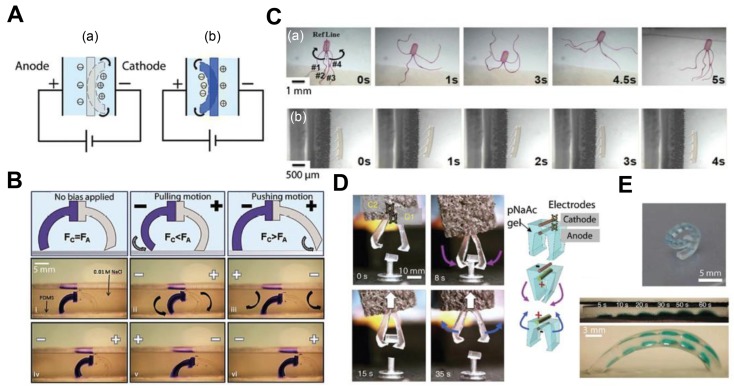Figure 4.
Ionic-hydrogel-based actuators. (A) Basic diagram of mechanism with (a) anionic and (b) cationic gels in the same solutions; each could achieve opposite bending directions under the same applied field. (B) Walker achieved unidirectional motion using both anionic and cationic gels. A field of 5 V/cm was applied; electrode field directions are shown in the images. (C) Locomotion of an anionic gel (a) octopus and (b) walker under electric fields in solution; the applied voltage signals were alternating (+7 V/−15 V) and ±15 V, respectively. (D,E) Patterning of hydrogel using ionoprinting for directional embedding of ions. (D) A gel gripper was able to grasp and release items. (E) The imprinted area size and location affected the degree of bending. (A,B) Adapted with permission from [52]. Copyright 2014, The Royal Society of Chemistry. (C) Reproduced with permission from [105]. Copyright 2008, John Wiley & Sons Inc. (D,E) Adapted with permission from [106]. Copyright 2013, Macmillan Publishers Ltd. The entire figure adapted with permission from [107]. Copyright 2017, John Wiley & Sons Inc.

